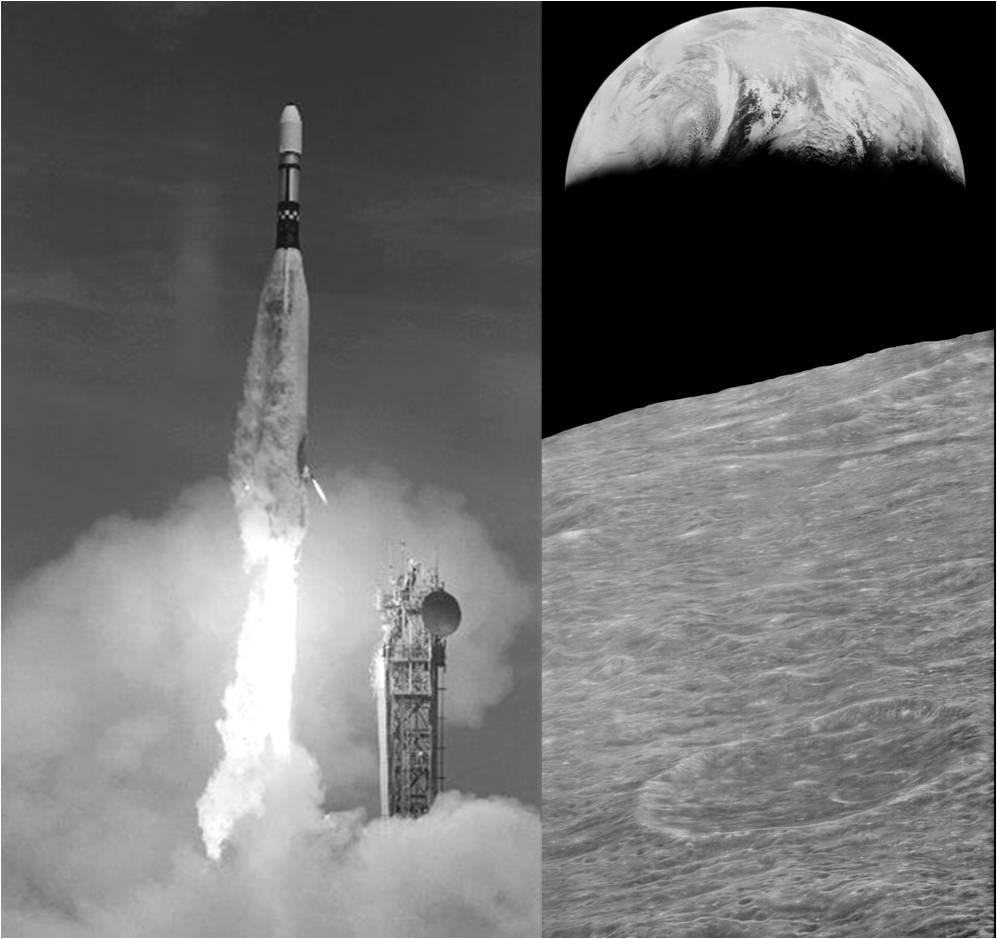
Forty-three years ago today, the Lunar Orbiter 1 spacecraft began its 92 hour trip to the Moon. Lunar Orbiter 1 rode into space aboard an Atlas-Agena D launch vehicle which lifted-off from Pad 13 at Cape Canaveral, Florida. Lift-off time was 19:26 UTC on Wednesday, 10 August 2009.
Lunar Orbiter 1 was the first of five moon mapping missions launched over a period of 12 months as part of the Lunar Orbiter Program. The primary purpose of this program was to thoroughly map the surface of Earth’s nearest neighbor in space preparatory to the historic Apollo lunar landings.
At 15:34 UTC on Sunday, 14 August 1966, Lunar Orbiter 1 was inserted into a highly elliptical lunar orbit that measured 117.5 miles by 1,160 miles. Orbital plane inclination and period of the 850-pound spacecraft was 12.2-deg and 208-minutes, respectively. By Friday, 26 August 1966, the Lunar Orbiter 1 perilune had been lowered to just 25.2-miles.
Lunar Orbiter 1 took photographs of the lunar surface between 18 August and 29 August. Onboard film processing was completed by 30 August and transmission to Earth of 211 high and medium resolution photographs was completed at 20:02 UTC on Wednesday, 14 September 1966. This event, which occurred on Mission Day 35, marked the completion of the photographic portion of the spacecraft’s mission.
Lunar Orbiter 1 imaged nearly 2 million square miles of the Moon’s surface to a resolution of 200 feet or better. This was 10 times better than that obtained from earth-based cameras. Lunar Orbiter 1 also provided the first views of earth as seen from the Moon.
Lunar Orbiter 1 would continue to orbit the Moon for another 45 days. As it did so, the spacecraft provided a wealth of micrometeoroid, gravitational, and radiation measurements that helped lunar scientists better understand the complex lunar environment.
The Lunar Orbiter 1 mission ended on Saturday, 29 October 1966 (Mission Day 80) during its 577th lunar orbit. This intentional action was necessary to make way for the next Lunar Orbiter mission in November. The impact site is located at 6.35-deg N and 160.72-deg E on the far side of the Moon.
